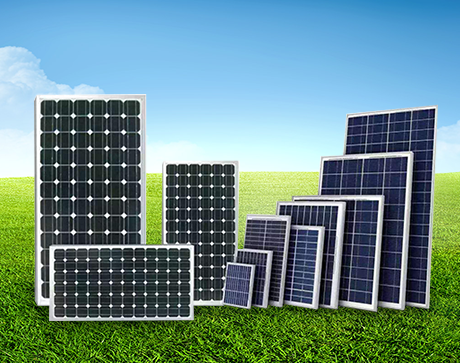BETTER TOUCH BETTER BUSINESS
Contact Sales at Litel Technology
How to calculate solar panel wattage?

The solar AC power generation system is composed of solar panels, charge controllers, inverters and batteries and the solar DC power generation system excludes the inverter. In order to enable the solar power generation system to provide sufficient power for the load, it is very necessary for us to select each component as per the power of the electrical appliance.
Today let me explain to you how to calculate the power of the solar panel.
Take 100W output power and use it for 6 hours a day as an example to introduce the calculation way:
1. First calculate the watt-hours consumed per day (including inverter losses):
If the conversion efficiency of the inverter is 90% when the output power is 100W, the actual required output power should be 100W/90%=111W; if it is used for 5 hours a day, the power consumption is 111W*5 hours= 555Wh.
2. Calculate the solar panel:
According to the daily effective sunshine time of 6 hours, and considering the charging efficiency and the loss during the charging process, the output power of the solar panel should be 555Wh/6h/70%=130W, 70% of which is the actual power used by the solar panel during the charging.
The solar panel manufacturer will give the solar panel performance parameters under standard test conditions in the product specification sheet: Generally including short circuit current Isc; open-circuit voltage Voc; maximum power point voltage Vap; maximum power point current Iap; maximum power Pmpp; conversion Efficiency Eff, etc.
Under standard test conditions, the relationship between the maximum power Pmpp and the conversion efficiency is as below:
Pmpp = battery area (m2)*1000(W/m2)*Eff
For example:
Product Type Conversion Efficiency (%) Power (W)
Single crystal 125*125 15 2.22855
Single crystal 156*156 15 3.58425
Polycrystalline 125*125 15 2.34375
Polycrystalline 156*156 15 3.6504
And do you know what the main components of a photovoltaic system include?
1. Photovoltaic module square array: It is composed of solar cell modules (also called photovoltaic cell modules) in series and parallel as per the system requirements. It converts solar energy into electrical energy for output under the illumination of sunlight. And it is the core component of the solar photovoltaic system.
2. Storage battery:Store the electrical energy generated by the solar cell components, and release the stored electrical energy to meet the energy demand of the load when the light is insufficient or at night, or when the load demand is greater than the electricity generated by the solar cell components. It is an energy storage component of the solar photovoltaic system. At present, lead-acid batteries are commonly used in solar photovoltaic systems. For systems with higher requirements, deep-discharge valve-regulated sealed lead-acid batteries, deep-discharge liquid-absorbing lead-acid batteries, etc. are usually used.
3. Controller:It regulates and controls the charging and discharging conditions of the battery, and controls the power output of the solar cell components and the battery to the load according to the power demand of the load. It is the core control part of the entire system. With the development of the solar photovoltaic industry, the functions of the controller are becoming more and more powerful, and there is a trend to integrate the traditional control part, inverter and monitoring system. For example, the controllers of AES's SPP and SMD series integrate the above three a function.
4. Inverter:In the solar photovoltaic power supply system, if there is an AC load, an inverter device is used to convert the DC power generated by the solar cell module or the DC power released by the battery into the AC power required.
The basic working principle of the solar photovoltaic power supply system is to charge the battery with the electric energy generated by the solar cell module through the controller under the irradiation of sunlight, or directly supply power to the load when it can meet the load demand. Then, the battery supplies power to the DC load under the control of the controller. For a photovoltaic system with an AC load, an inverter needs to be added to convert the DC power into AC power. The application of photovoltaic systems takes many forms, but the basic principles are similar.
Copyright © 2025 Guangzhou Litel Technology Co.,Ltd. | All Rights Reserved
We are here to help you! If you close the chatbox, you will automatically receive a response from us via email. Please be sure to leave your contact details so that we can better assist